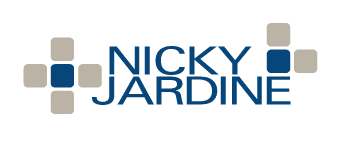A Combined Approach To Team Building In Practice Management
‘Many hands make light work’ is an idiom that is most applicable when those involved are motivated to work together towards a common goal.
Whether we are building a team environment for sport or work, it is a long-term project requiring specific ingredients.
Being the rudder that guides a team, the element of leadership provides a logical starting point for those setting up a practice or refining an existing one.
Whether forging ahead or supporting from behind, the responsibilities of leadership lie in decision-making, issue resolution and developing policies and procedures that guide the workplace.
Rather than the dictation of rules and regulations, successful leadership requires clear communication that keeps a team connected and in sync.
To foster communication within a team, we can schedule regular meetings to build cooperation, exchange ideas and provide constructive criticism.
We must offer all team members the confidence to speak and act in these meetings without feeling insecure or embarrassed.
Beyond identifying problems, all parties can contribute constructive feedback and participate in brainstorming and group exercises that form a consensus on solutions to current issues.
From these sessions, we can encourage individuals to take ownership and accountability for issues identified and solutions proffered.
Our ability to communicate with each other and achieve objectives benefits from this encouragement yet relies on two areas that work hand in hand – respect and trust.
The gradual earning of trust and giving of respect can feed two more ingredients essential for a cohesive workplace – collaboration and cooperation towards a common goal.
Although goals evolve, each member should understand their short-term and long-term objectives and have their roles and responsibilities clearly defined.
By providing structure and clarity for these goals, those within leadership roles can align all involved with a shared sense of purpose and an investment in their success.
Further to this success is the harnessing of complementary skills within individuals.
We must value the diversity of a team to benefit from their various perspectives, experiences, and backgrounds.
We can integrate regular training and refresher courses to support the individual development of skills, knowledge and abilities in a team.
These sessions can provide a safe and supportive environment to hone staff skills and encourage confidence through awareness of current best practices.
To follow up, those with newfound skills can share expertise and experiences within a group to support cohesiveness and future collaboration.
Quality data, access to resources and external training can all assist information sharing to leverage problem-solving and decision-making while contributing to the mental fitness of the workspace.
Involving all levels of staff in developing these ingredients of team building can help draw out the skills of individual staff and their potential as a group.
Efforts towards building a cohesive practice team may then develop a consistent and optimal quality of service.
The flow-on effect of improved patient satisfaction can, in turn, positively influence staff morale, reputation and ultimately, the lifeblood of all businesses – profit.
Having set up and managed a range of medical clinics over the last decade, Nicky has a keen eye for driving practice operations towards efficiency, profitability and compliance.
To learn more about how Nicky’s health business solutions can take your medical practices to the next level, please email nicky@nickyjardine.com or contact Nicky here.

